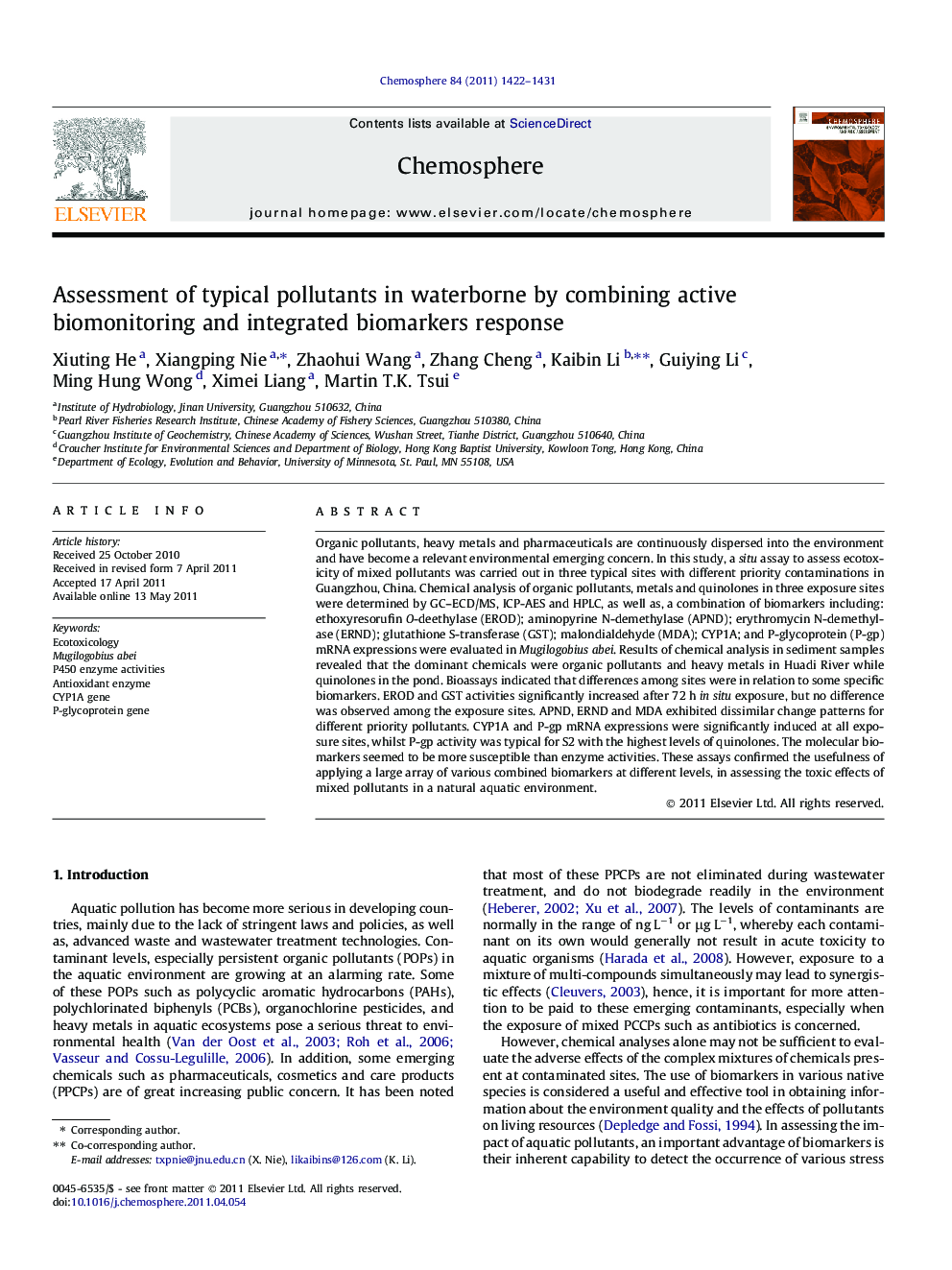| Article ID | Journal | Published Year | Pages | File Type |
|---|---|---|---|---|
| 4410773 | Chemosphere | 2011 | 10 Pages |
Organic pollutants, heavy metals and pharmaceuticals are continuously dispersed into the environment and have become a relevant environmental emerging concern. In this study, a situ assay to assess ecotoxicity of mixed pollutants was carried out in three typical sites with different priority contaminations in Guangzhou, China. Chemical analysis of organic pollutants, metals and quinolones in three exposure sites were determined by GC–ECD/MS, ICP-AES and HPLC, as well as, a combination of biomarkers including: ethoxyresorufin O-deethylase (EROD); aminopyrine N-demethylase (APND); erythromycin N-demethylase (ERND); glutathione S-transferase (GST); malondialdehyde (MDA); CYP1A; and P-glycoprotein (P-gp) mRNA expressions were evaluated in Mugilogobius abei. Results of chemical analysis in sediment samples revealed that the dominant chemicals were organic pollutants and heavy metals in Huadi River while quinolones in the pond. Bioassays indicated that differences among sites were in relation to some specific biomarkers. EROD and GST activities significantly increased after 72 h in situ exposure, but no difference was observed among the exposure sites. APND, ERND and MDA exhibited dissimilar change patterns for different priority pollutants. CYP1A and P-gp mRNA expressions were significantly induced at all exposure sites, whilst P-gp activity was typical for S2 with the highest levels of quinolones. The molecular biomarkers seemed to be more susceptible than enzyme activities. These assays confirmed the usefulness of applying a large array of various combined biomarkers at different levels, in assessing the toxic effects of mixed pollutants in a natural aquatic environment.
► The toxic effects of mixed pollutants in water were assessed by combing chemical analysis with biomarkers response of an indigenous fish. ► CYP1A1 mRNA expression exhibit susceptible response to PAHs, OCs and heavy metals after 24-h exposure and the same for P-gp to the high quinolones after 72-h exposure. ► Responses in gene levels seem to be more sensitive to the exposure of these pollutants than enzymes activities.
